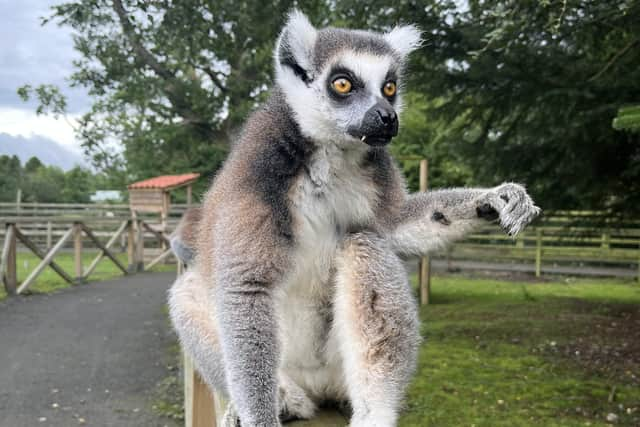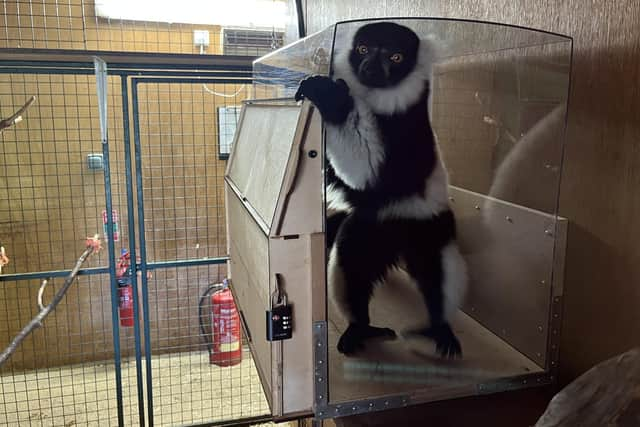Lemurs get into the groove with personal sound system at Scottish safari park
A troop of cheek little lemurs at Blair Drummond Safari Park, near Stirling, have been given access to their very own entertainment system as part of an investigation into ways of “enriching” the lives of captive animals using technology.
And it turns out, individual lemurs – just like humans – have their own personal favourite vibes, with some going for banging tunes and others preferring to chill with more pastoral tones.
Advertisement
Hide AdAdvertisement
Hide AdThe findings are the latest from an ongoing research partnership between zookeepers at Blair Drummond Safari Park, near Stirling, and researchers from the University of Glasgow.
Land reform: How state-owned ground should be used to benefit the people and communities of Scotland
The new project saw a specially designed wooden box – dubbed the LemurLounge – installed inside enclosures housing three different species of lemurs.
The LemurLounge was fitted with speakers and lined with infrared sensors that allowed the creatures to trigger a range of pre-recorded soundtracks on demand – including rainforest ambience, city hubbub, upbeat tunes, calm music or white noise – with the chosen track continuing to play for as long as the lemur remained inside.
This type of system has previously been tested on other species but it’s the first trial with lemurs.


The results suggest the animals – which originate in Madagascar and belong to the primate family tree that includes monkeys, apes and humans – have no overall preference for a particular type of sound but they do seem to like noise better than silence when given the choice.
Tendencies also varied between lemur species and age groups.
Dr Ilyena Hirskyj-Douglas, from the University of Glasgow’s School of Computing Science, led the study.


She hopes the findings could help in developing more fully featured digital enrichment systems for lemurs living in zoos and advance the emerging field of animal-computer interaction.
Advertisement
Hide AdAdvertisement
Hide Ad“Technology offers us the opportunity to enrich the lives of zoo animals with interactive systems that are custom-designed for their physical and mental needs, interests and abilities,” she said.
“However, in order to make the most of the potential of interactive devices it’s vital that we take their preferences into account.
“As much as we can, we want to design systems in collaboration with them rather than trying to decide what they might want for ourselves.


“Our partnership with Blair Drummond Safari Park gives us the chance to start mapping out what a future of animal-computer interaction might look like.”
Fellow researcher Vilma Kankaanpää added: “The computer systems humans use in our everyday lives were developed through intensive research into users’ needs and preferences.
“In order to build the best possible interactive systems for animals in the future we’ll need similarly focused research into what works for them.
“This study is one step further towards a future where zoo animals have access to digital devices which can enrich their lives.”
Alasdair Gillies, Blair Drummond’s research coordinator, hopes interactive systems can be brought into wider use at zoos.


Advertisement
Hide AdAdvertisement
Hide Ad“It’s very interesting to hear this study has shown that individual preference may be just as significant to the design process as species variation,” he said.
“For us keepers these findings come as no surprise.
“Our interactions with these animals grant us the privilege of witnessing their many varied idiosyncrasies on a daily basis.”
Comments
Want to join the conversation? Please or to comment on this article.